The World's Most Stunningly Yellow Animals
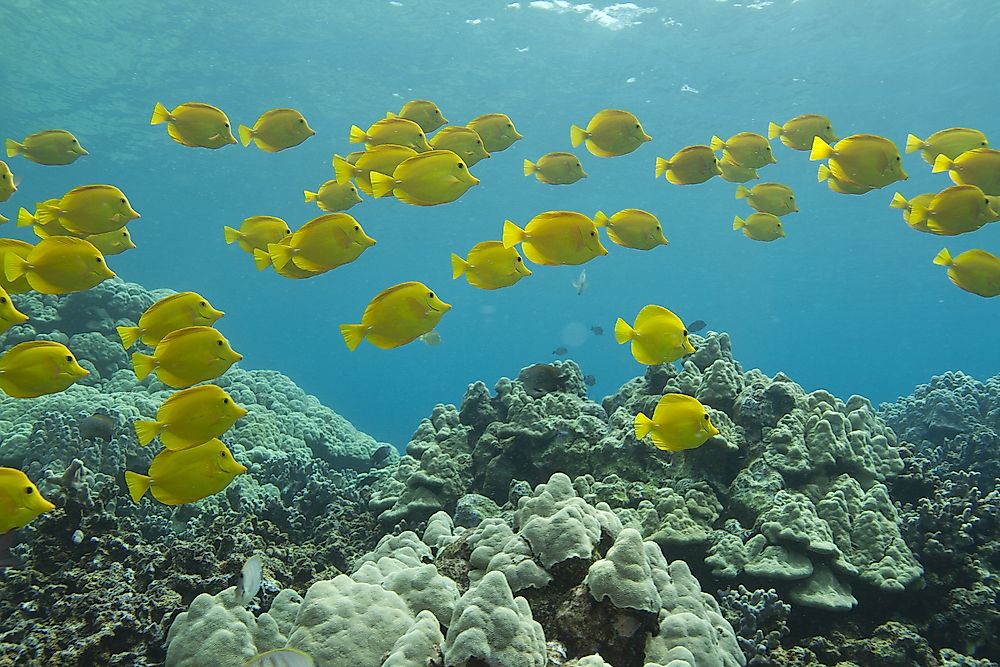
Animals can vary greatly in color. Some are very brightly colored while others blend perfectly into their surroundings. Some animals use mimicry to mimic their surroundings while others use their bright colors to startle or warn predators. In some species, males are more strongly patterned and color while females are more monotonous in appearance. The following article explores some of the world's most brightly colored yellow animals.
15. Ghost Crab
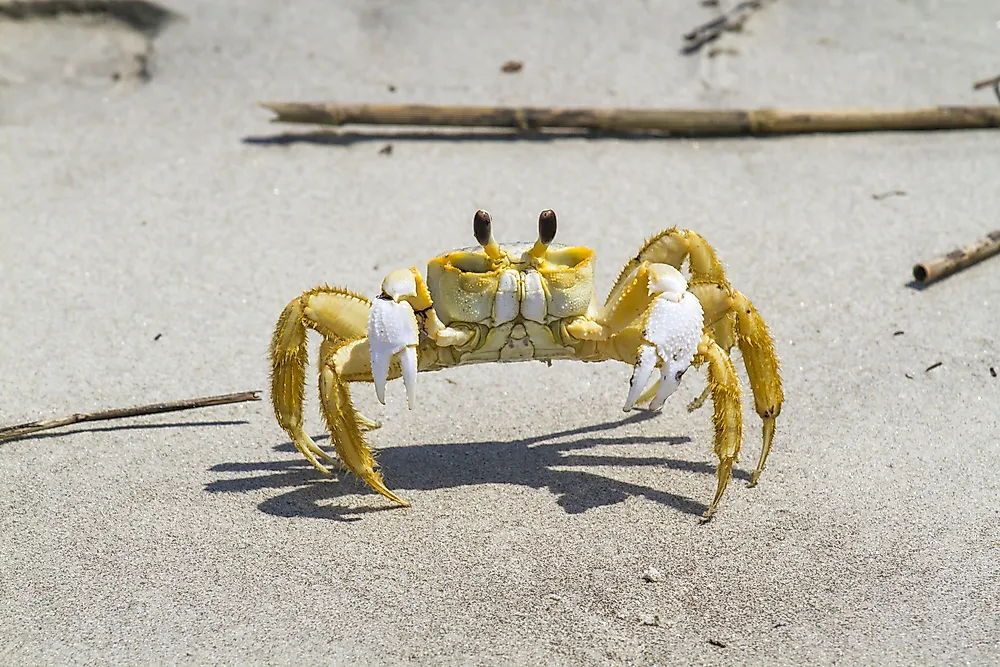
The ghost crab belongs to the genus Ocypoda and the Decapod species. Its unique yellow color enables the crab to camouflage in the sand. Consequently, it can secretly pounce on its prey. The name “ghost crab” alludes to the nocturnal nature of the crab. Sometimes it is known as the sand crab. The ghost crab inhabits sandy shores of many parts of the US and Brazil.
14. Clouded Sulphur
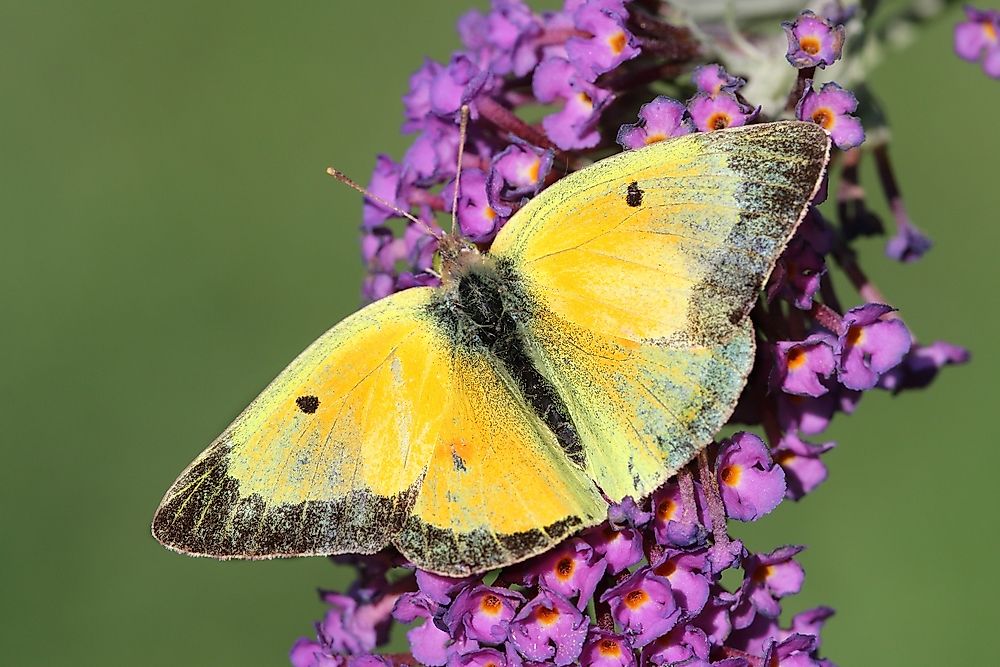
The clouded sulphur butterflies derive their names from the solid state of sulphur. They have an attractive yellow color. Scientifically known as Phoebis sennae, the clouded sulphurs inhabit most parts of the US including Wisconsin. They also have camouflaging properties. Clouded sulphur butterflies do not hibernate during the winter season.
13. Yellow Warbler
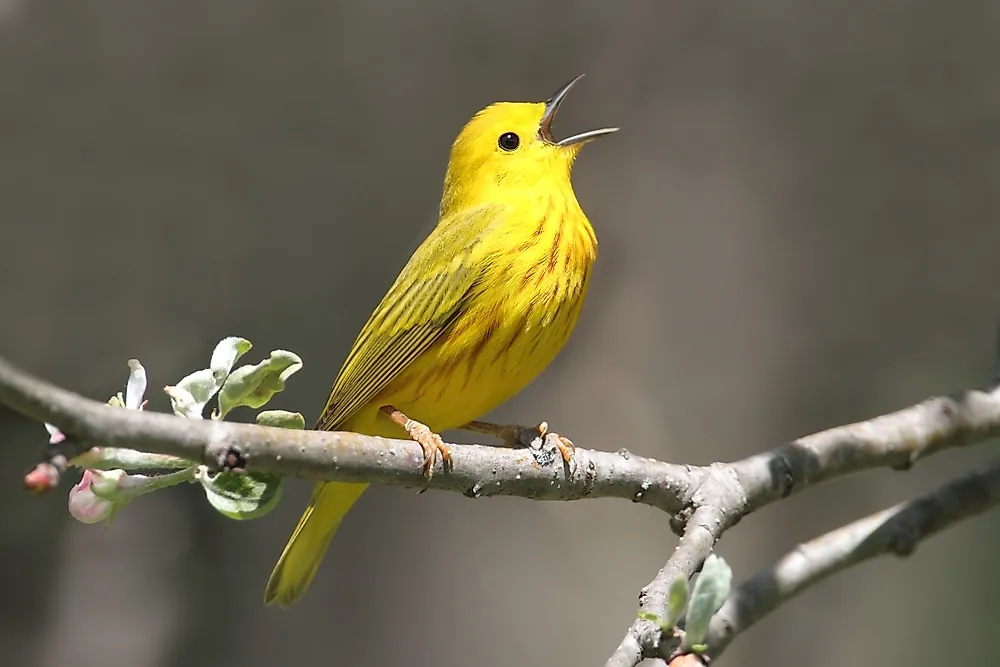
The yellow warbler is a yellow bird with patches of golden green and reddish brown on its body. It is prevalent in North, South, and Central America. The yellow warblers are diurnal birds and inhabit places with an altitude of 9,000 feet. Regarding their feeding habits, the yellow warblers are omnivores.
12. Goldenrod Crab Spiders
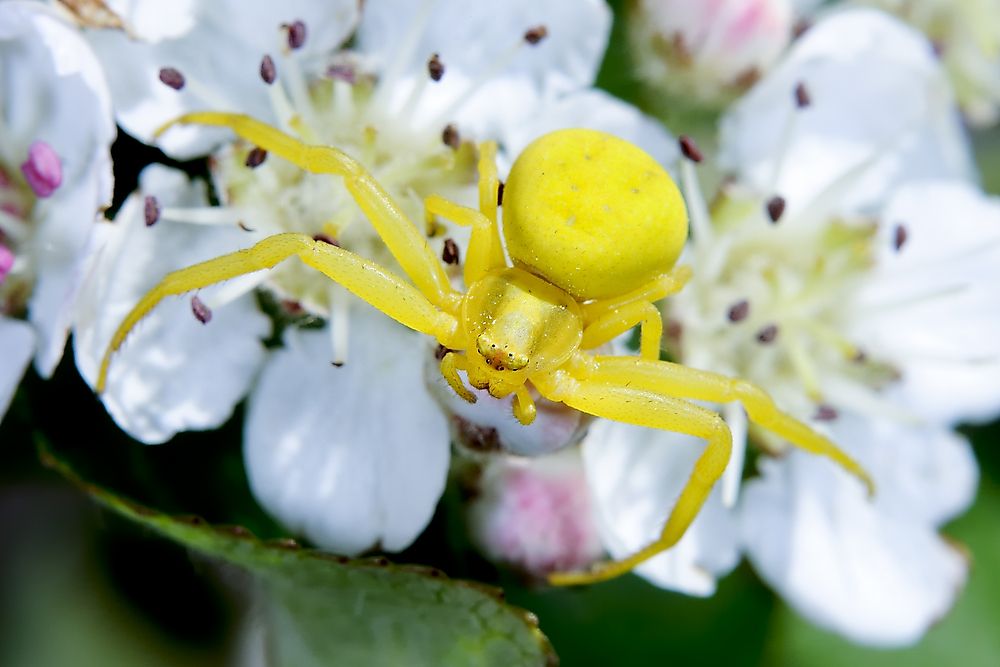
The goldenrod crab spiders inhabit North American flowers such as the goldenrod and daisies. These spiders are unique because of the skull like marks on their abdomen. Besides, they can feed on preys that are larger than themselves. They do so by camouflaging thus hiding away from their prey and planning surprise attacks on them. Goldenrod crab spiders take six days to change from yellow to white or any other color. However, in order to reverse back to yellow, it takes them 30 days.
11. Yellow Tang
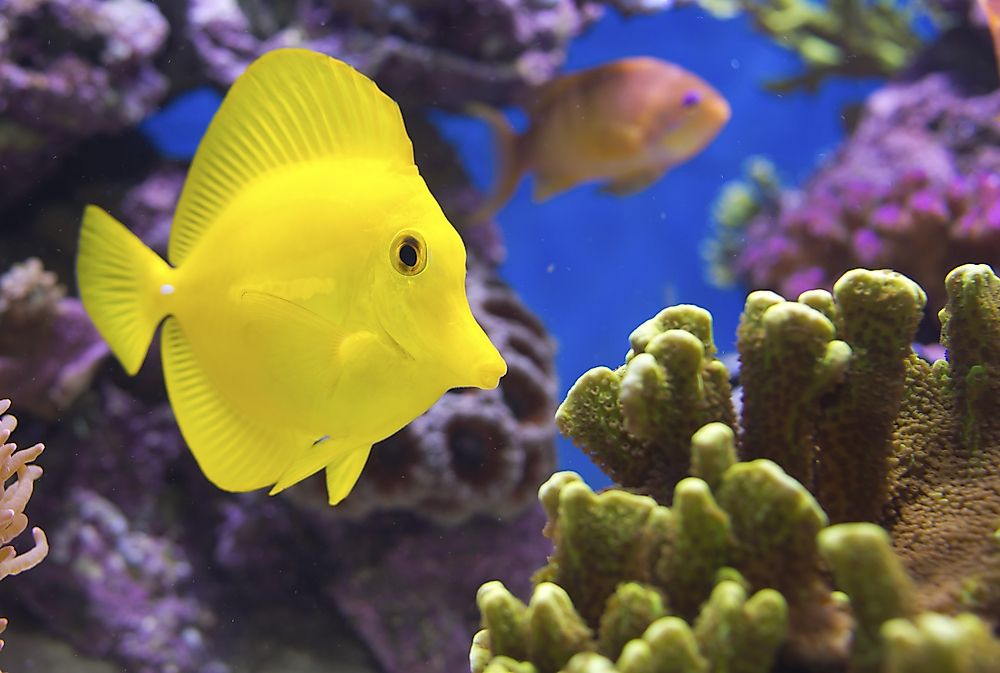
The yellow tang fish is a saltwater fish. It is widely kept in aquariums. The word “tang” refers to the two spines found on the tail of the fish. The spines are defense mechanisms against predators. Interestingly, the yellow color of the tang fish fades during the night. The objective of this change is to hide them away from the predators. Yellow tang fish inhabit the beaches of Hawaii and Japan.
10. Burmese Python
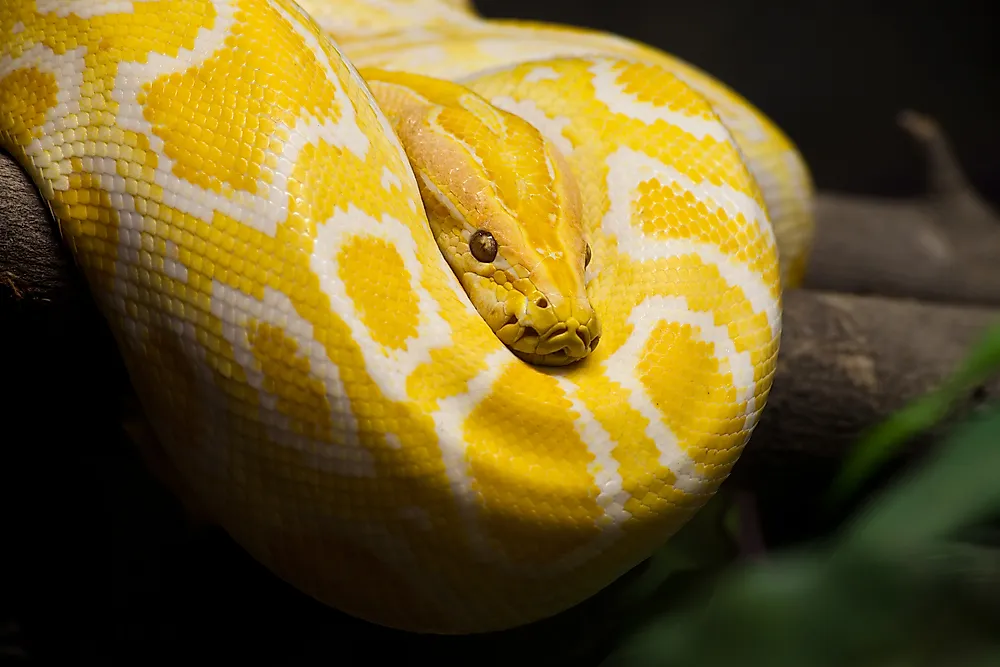
Southeast Asia natives, Burmese pythons are among the five largest species of snakes worldwide. Their skins are beautifully colored in yellow and either black or white. The snakes can grow up to 23 feet long and weigh about 200 pounds. The Burmese python snakes are also excellent swimmers. In fact, they are capable of staying below water for 30 minutes without coming up for air. The Burmese pythons mainly feed on birds and small mammals. They kill their prey by constriction.
9. Climbing Mantella
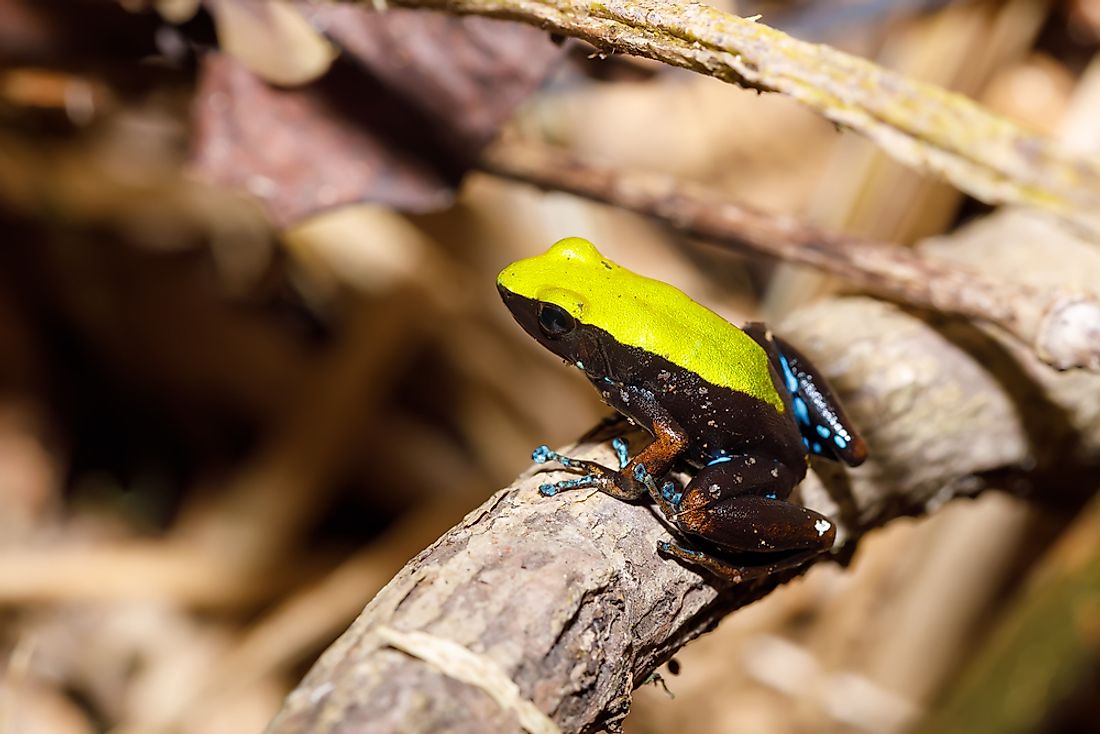
Climbing Mantella is a species of frog that has a yellow skin. It is native to northeastern Madagascar. Besides the unique color, another special feature of the climbing Mantella is its semi-arboreal nature. In addition, the climbing Mantella is poisonous. However, it is not harmful to humans. Its habitat is threatened by habitat loss resulting from human activities such as logging, livestock grazing, and agricultural activities among other factors.
8. American Goldfinch
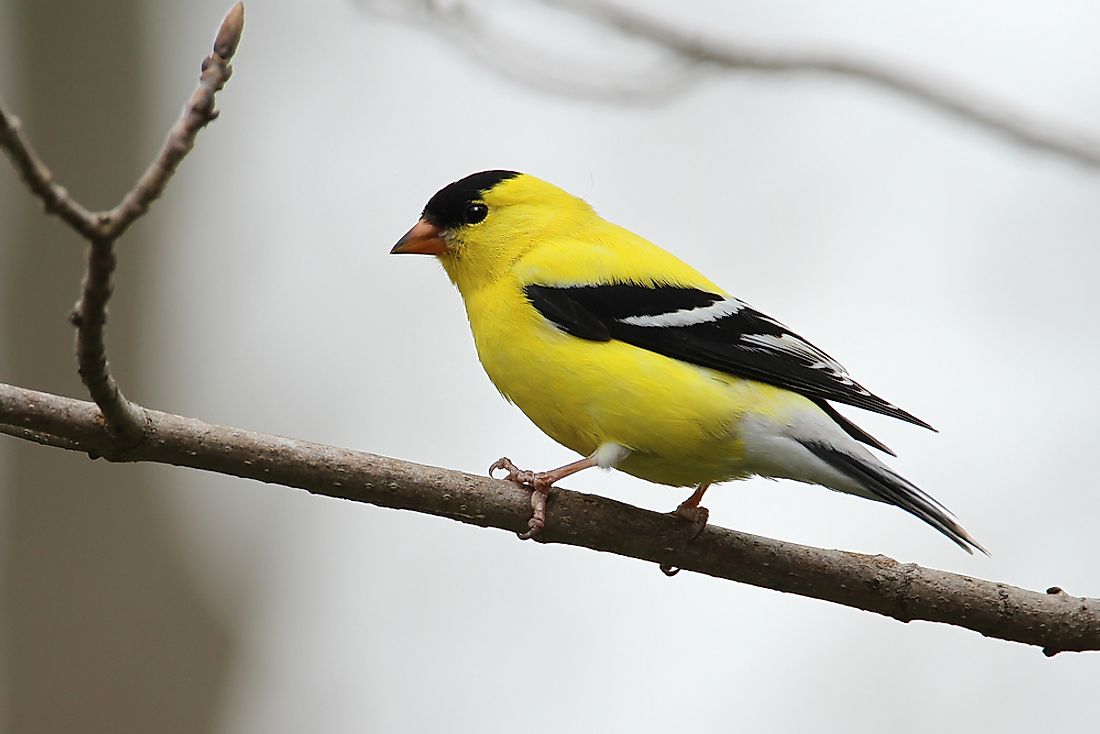
The American goldfinch is bright yellow. It is popular for its roller coaster flying motion. An interesting fact about the goldfinch is that it sheds off all of its wing feathers twice every year. Furthermore, it is acrobatic meaning it can eat upside down or standing upright. The American goldfinch gains weight before and during a storm.
7. Land Iguana
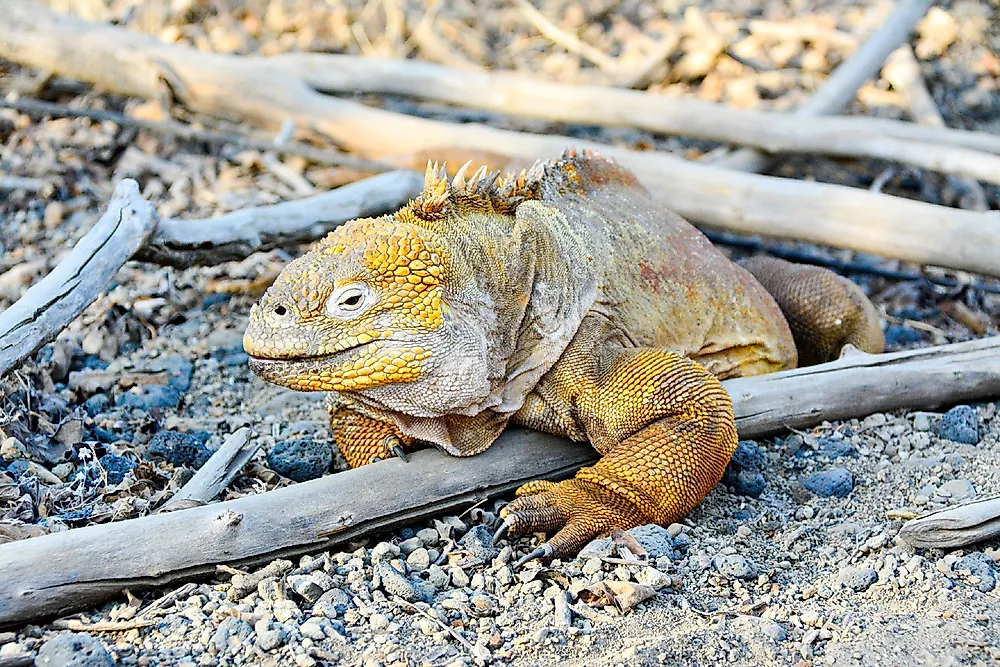
The Land iguana is a species of lizard predominantly found in Galapagos Island. It can live for up to 60 years and grow to five feet long. Furthermore, the iguana weighs 13 kilograms. They are primarily herbivores with prickly pear cactus making up 80% of their diet. The IUCN Red List, the iguana is categorized as vulnerable.
6. Panamanian Golden Frog
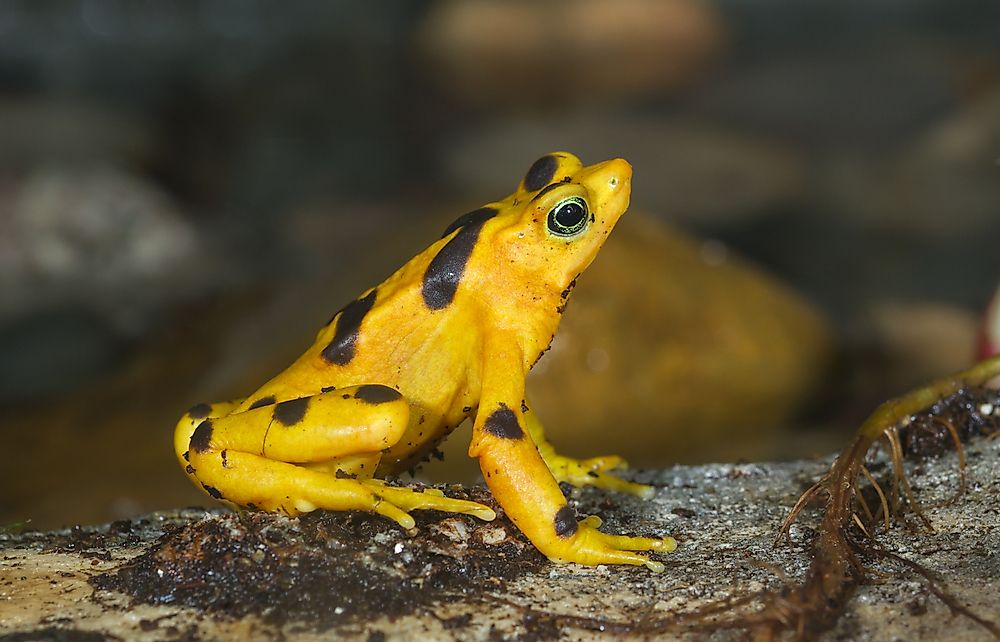
The Panamanian golden frog is a type of toad that is native to Panama. In fact, it is considered the most beautiful frog in Panama. The color of the frogs ranges from light yellow to gold. Some of the frogs have black spots on their legs and backs. The Panamanian frog has different toxins namely guanidinium alkaloids and bufadienolides.
5. Banana Slug
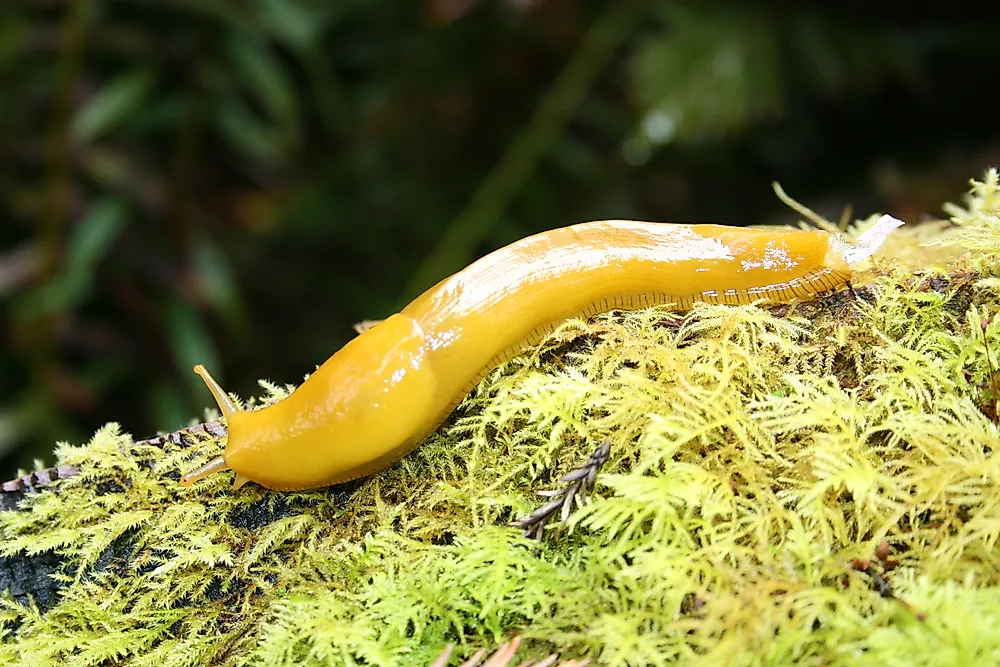
Banana slugs are bright yellow with some being green, tan, white, or brown. They change their color depending on the intensity of light, food consumption, and moisture levels. The color of a banana slug indicates its age and health status. The slugs have a lifespan of between one and seven years. The Banana slugs derive their name from the banana fruit which they resemble in both shape and color.
4. Yellow Common Seahorse
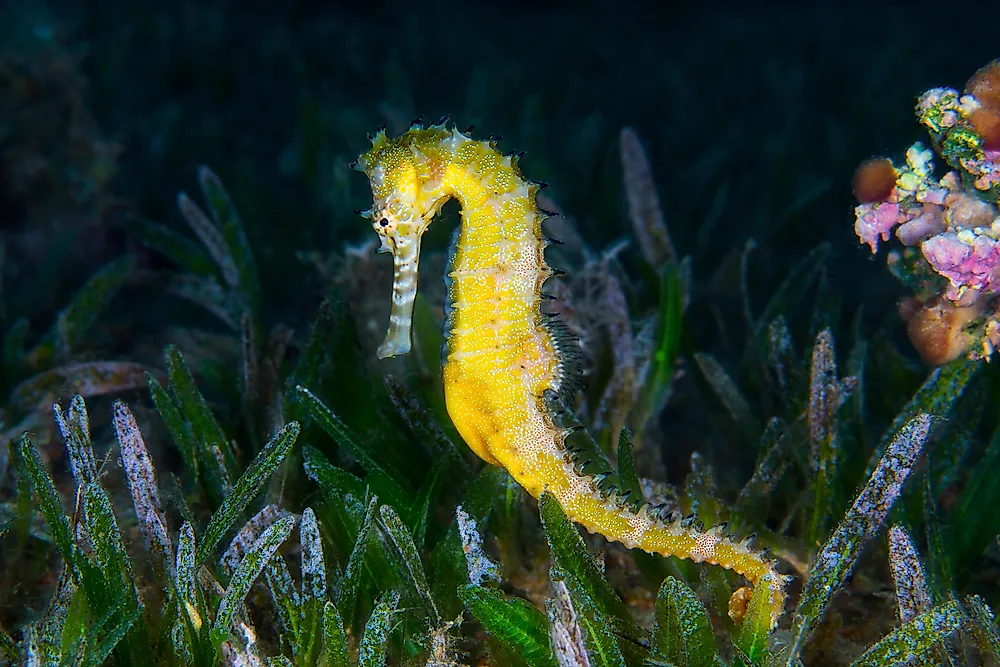
Scientifically referred to as the Hippocampus kuda, the yellow common seahorse is a fish that has no scales. Instead, they possess a layer of skin covering that cover their bodies. A unique feature of the seahorses is that it is the males that become pregnant; not the female. Seahorses are ambush predators that feed by sucking their prey into their tube-like mouths. They swallow their food whole since they do not have teeth.
3. Apple Snail
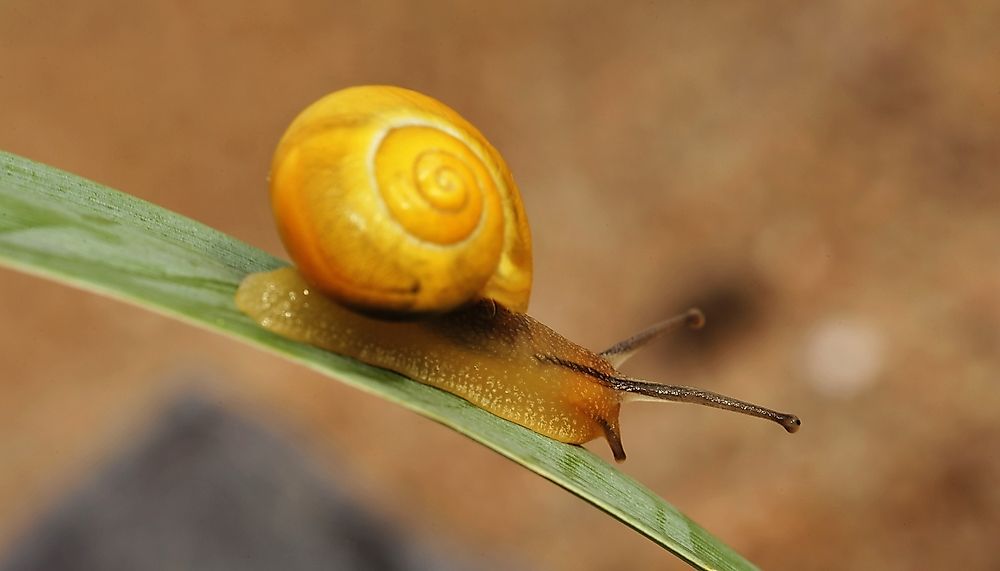
The strange and beautiful apple snail derives its name from its apple-like shape. One of its special features is that it has a breathing siphon. Another interesting fact is that all apple snails are left-handed! However, they do not have physical hands. One determines the handedness of a snail by looking at the side that the aperture faces. If it faces left, the snail is left handed. If it faces right, then the snail is right-handed.
2. Pacific Sea Nettle
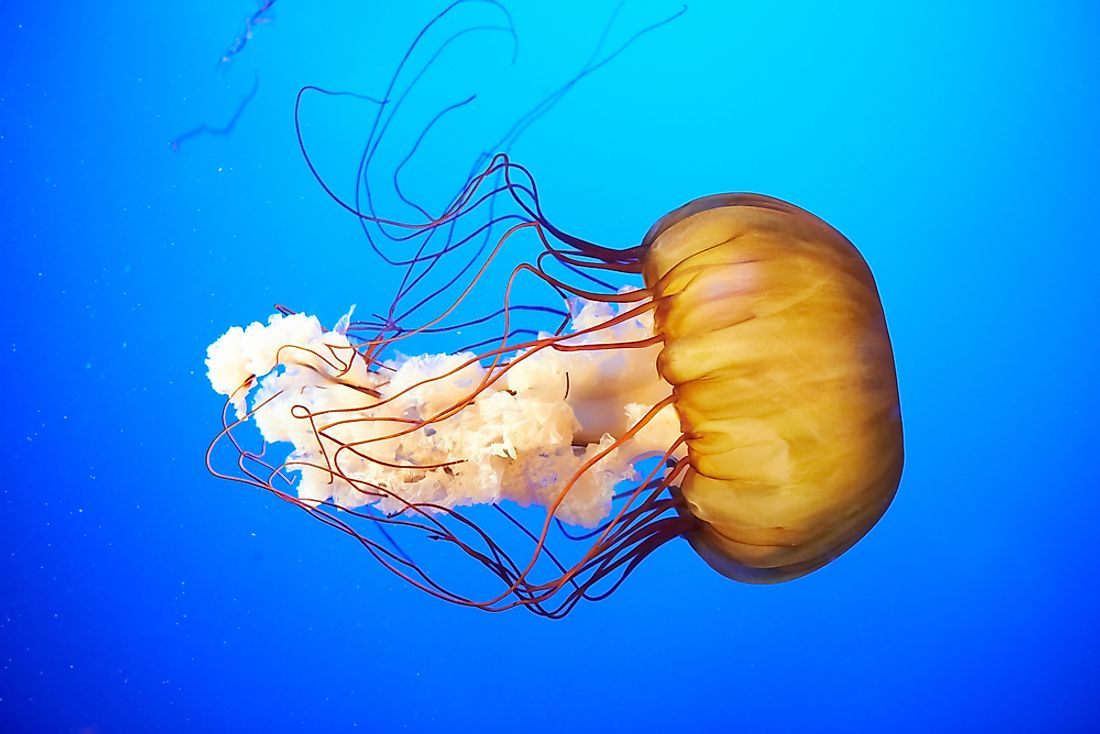
The Pacific sea nettle, scientifically known as Chrysaora fuscescens, is yellow to reddish brown. It freely floats in water and possesses long, ruffled tentacles. The tentacles can grow up to 16 feet long. They contain stinging cells used by the Pacific sea nettle to catch its prey. Furthermore, the Pacific sea nettle uses the ocelli, its light-sensing organs, to move about in the waters.
1. Asian Golden Weaver
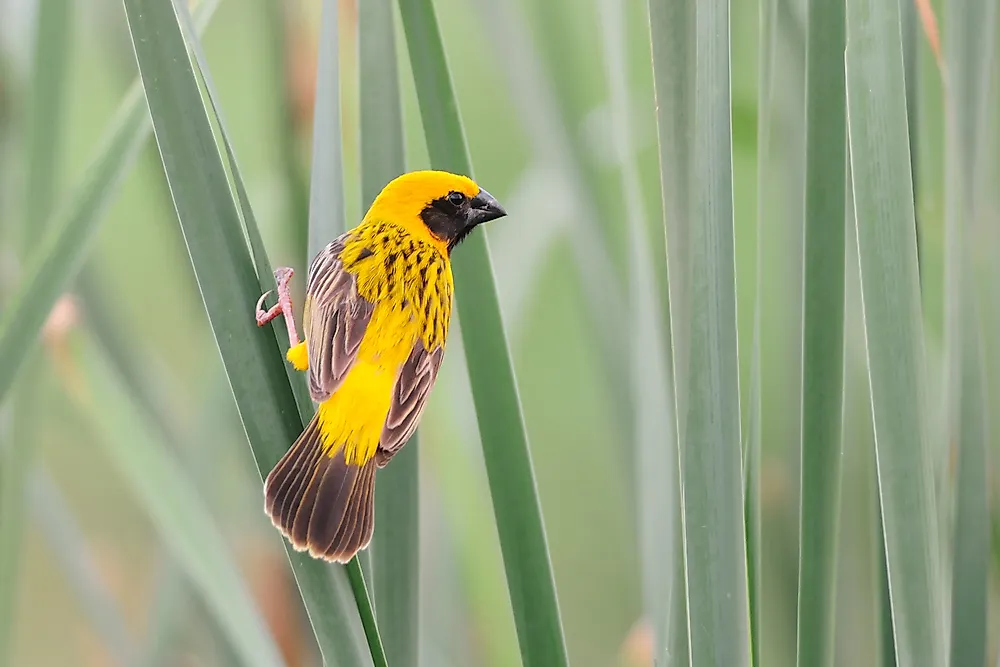
The Asian golden weaver is a bird that is endemic to Myanmar, Vietnam, Cambodia, Laos, Thailand, and Indonesia. They have yellow feathers covering most parts of their bodies. However, their faces have black masks and the wings and tails are grey. They mainly feed on grass seeds such as Echinochloa colona. The Asian golden weavers are mostly monogamous. However, there are isolated cases of polygamy.











